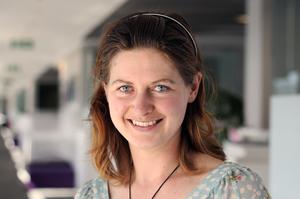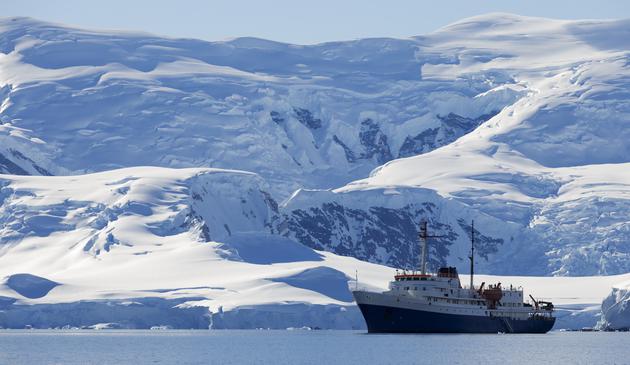Ever wondered how your perception of Antarctica has been shaped over the years? Influences are usually documentaries, advertising, or by reading books on the continent.
Being a continent that is accessible to very few people, Antarctica is regarded as truly the last frontier and a place of mystery.
Hanne Nielsen recently completed her PhD on the topic of Brand Antarctica: Selling representations of the far south from the 'Heroic Era' to present, which was a research collaboration between the University of Tasmania’s College of Arts, Law and Education’s (CALE), School of Humanities and the Institute for Marine and Antarctica Studies (IMAS).

Hanne Nielsen
Through her research Ms Nielsen aims to get an understanding on what sort of versions of Antarctica people carry around in their heads, and where they come from.
“Most people never go to Antarctica but they have this imagined version and it’s informed by inputs like literature, film, and advertising. Looking at these inputs is a really easy way to get a shortcut to what some of those framings are,” Ms Nielsen said.
“I collected over 500 advertisements and analysed those looking for common themes. Some of the themes that kept coming up time and again were Antarctica being framed as a place for heroes, a place of extremes, a place of purity, or a place that’s fragile and needs protection.
“No one had looked at the influence of advertisements. There’d been some work done on literature, music, but there was a big gap in advertising looking at that popular culture, and that’s what made me want to do that for my PhD. “
Ms Nielsen believes it is important to understand peoples’ perceptions of the continent as it has implications for the type of policy we make about Antarctica, how we behave when we get there
“Getting an understanding of how people are imagining and thinking about Antarctica from here in Australia can really be very helpful for planning ahead for future strategies, and for understanding why we actually value that place.
“For the Antarctic community I think it’s really important for everyone working with that continent to have an understanding not just of specific scientific ways of looking at that place, but also the historical, the political and the cultural backgrounds, and why we operate down there the way that we do.
“So my research feeds into better understanding that kind of cultural and social background.
The Hobart factor
“In terms of the wider community, in a place like Hobart where we are an Antarctic gateway city, one of five, Antarctica has a really strong presence.
“With Antarctic research we’re in a really good position because we’re all looking at the one continent from many different angles, but as we go forward it’s going to be really important to bring in a range of different views from all different disciplines to answer these problems that we face.
“Having people on your research team from Humanities and Social Sciences based in one building, it is very helpful working alongside some of the scientists. Figuring out what are the right questions to ask, and then going about finding ways to address those as well. “
Antarctica – a place to protect
Ms Nielsen believes that it is important to let people know that Antarctica is a place for all of us.
“It’s often thought of as a place just for science and for scientists, but actually we all have a stake in that southern continent. So the idea that Antarctica is a place to protect is a strong one now.
“With my project I’d really like to show these different ways of framing the place, and also help people understand how we’ve come to be where we are today.“
Interested in conducting your own research? Apply now to become a research student.



